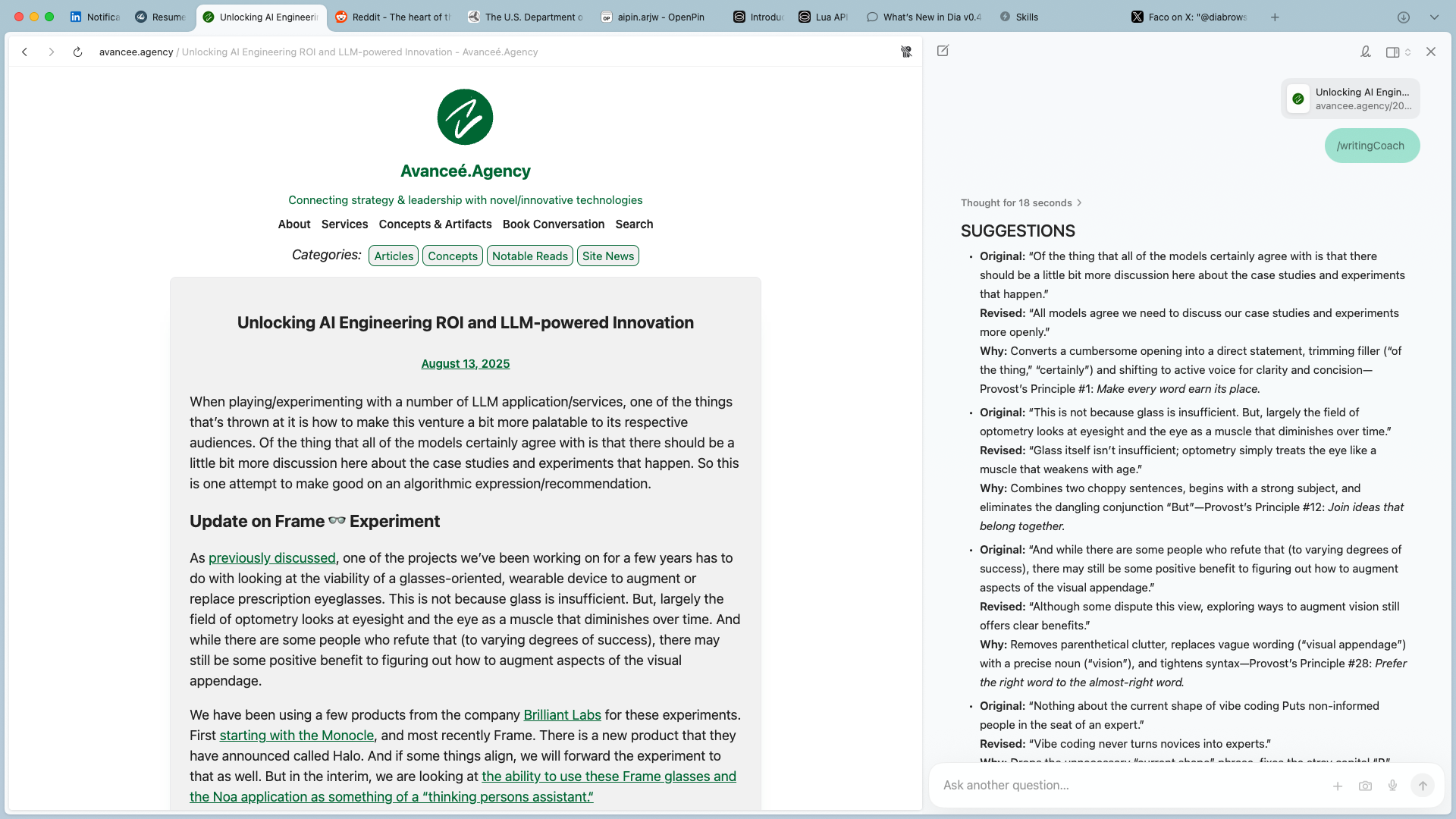Applying Lessons Using Dia Skills
We went back to the last article and applied a newly mentioned Dia browser skill by @FaCo9 to it. Impressive output… we might have a new “editor” on deck. We recommend checking the link to the skill to get all of the text necessary to reproduce it (and depending on your environments, you might be able to use this prompt within other LLMs
Unlocking AI Engineering ROI and LLM-Powered Innovation
When we experiment with large-language-model services, the same question returns: How do we make our work meaningful to real people? The answer lies in sharing our case studies and experiments more openly.
Frame 👓 Experiment Update
For years we’ve tested whether glasses-style wearables could augment—or even replace—traditional prescription lenses. Using Brilliant Labs devices such as Monocle and, most recently, Frame, we have treated the glasses and the Noa app as a “thinking-person’s assistant.” A new device, Halo, may soon join the lineup.
The hardware works. The challenge is building software without drowning in repositories and pipelines. “Vibe coding” promises code-free development, yet it never turns novices into experts. Competence still matters—especially when diagnosing bugs.
Key principles
- Use LLM services to accelerate R&D.
- Don’t let limited coding skills stop you from rough-drafting components and apps.
Directions for AI Engineering
History shows a pattern: immigrants adopt a new culture, mature within it, then their children make it native. AI engineering follows that arc. Today’s practitioners repurpose old computing habits while inventing new rhythms and methods.
We abandoned the “one big prototype” mindset and adopted service design. By questioning our own assumptions—and refining them through LLM feedback—we shifted from “solve prescription eyewear” to “elevate information fidelity for existing glasses wearers.”
AI engineering delivers more than prototypes. It packages tests, validations, and simulated environments, exposing threats and opportunities early. Tacticians gain a wider lens; strategists move from prediction to simulation.
Key principles
- Generate interactive, high-quality prototypes and content with LLMs.
- Aim at outcomes, not features.
- Mix multiple LLMs to refine requirements and governance.
What Comes Next
The emerging language blends forecasting and caretaking. Software becomes less a finished product and more a teacher. Ignore its lessons and you’ll suffer performance, scaling, or relevance woes. The AI engineer must play prophet and servant, scanning many paths and sculpting experiences that lead to the best possible outcomes.
Our Frame experiment proves the value of integration over reinvention. Instead of building a bespoke app, we add filters and faucets to an already robust platform.
Final Takeaways
- AI engineering bridges behavior and solution.
- Going beyond static prototypes maximizes LLM power.
- Use your free LLM credits to clarify ideas early.
- Collaborate where your expertise ends.
- Document the skill-gaps analysts, designers, and developers must close.
- Keep the narrative focused on outcomes, not infrastructure.
